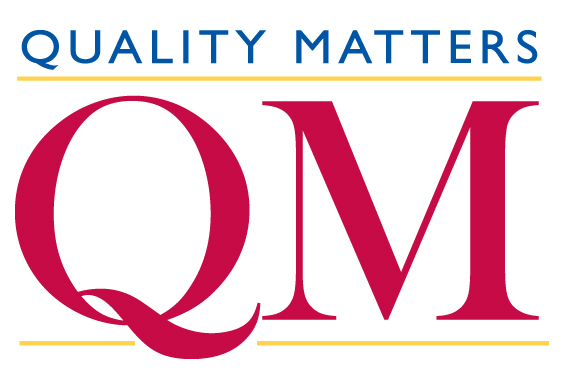Syllabus
California Lutheran University and the Digital Learning Department utilize Quality Matters (QM) standards to strategically guide the design of online and blended courses.
The syllabus is a complex and ever-changing document. Digital Learning does not own or mandate any part of it. Instead, we supply as much information around it as possible, including the guidelines from the faculty handbook and from individual colleges, so you can make informed decisions.
On-ground students who physically see you every week tend to have a higher tolerance for ambiguity, so it is easier for instructors to make decisions about the course as they go along. Online students who are balancing schoolwork with jobs and families are less amenable to change, and lack of evidence of clear planning tends to make them anxious.
Constructing a quality online syllabus will influence students’ motivation and persistence. An online syllabus should clearly define expectations and responsibilities up front. When faculty take time to meet quality components of an online syllabus, they later appreciate the effect on students.
We provide support on the entire syllabus .
Quality Matters Standards

As online courses continue to grow, the need for standards has become critical. CLU utilizes Quality Matters (QM) standards to guide the course design process. QM is a nationally recognized, faculty-centered, peer review process designed to certify the quality of online courses. Today, QM is considered the gold standard for online course design, advancing quality assurance practices in teaching and learning.
Course Learning Outcomes
Course learning outcomes are specific statements of what students will be able to do when they successfully complete a learning experience (e.g., paper, project, presentation, etc.). Course learning outcomes are always written in a student-centered, measurable fashion that is concise, meaningful and achievable.
Weekly Student Learning Objectives
When courses are divided into smaller units such as modules or weeks, weekly student learning objectives may be developed for these smaller units which can then be aligned to the course learning outcomes.
Weekly student learning objectives help instructors 1) describe to students what is expected of them, 2) plan appropriate teaching strategies, materials and assessments, 3) learn from and make changes to curriculum to improve student learning, and 4) assess how the outcomes of a single course align with larger outcomes for an entire program.
Weekly student learning objectives help students 1) anticipate what they will gain from an educational experience, 2) track their progress and know where they stand, and 3) know in advance how they will be assessed.
Developing Measurable Learning Outcomes and Objectives
Bloom's Taxonomy is a set of hierarchical models to classify the degree to which we want our students to understand and use concepts, demonstrate particular skills, and have their values, attitudes and interests affected.
To determine the level of expertise required for each measurable student learning objective, first decide which of these three broad categories (knowledge-based, skills-based, and affective) the corresponding course learning outcome belongs to. Then, using the appropriate Bloom's Taxonomy, look over the descriptions of the various levels of expertise. Determine which description most closely matches that measurable student objective.
Course learning outcomes and weekly student learning objectives establish a pedagogical interchange so that teachers and students both understand the purpose of that interchange.
Arizona State University developed a terrific tool to write measurable course learning
outcomes and weekly student learning objectives. Check it out! Objective Tool Builder
Carnegie and Credit Hours
A correct Carnegie hour table is required in all syllabi. In the following document, we explain details of the Carnegie hour table, and provide examples on what counts as instructor-led activities and what counts as independent led activities.
Carnegie and Actual Hours Explained
There are more Carnegie examples for different term lengths.
Syllabus Template
Here is an example syllabus template that faculty may use as a guide. Your department may have additional requirements.
Instructors are encouraged to consult their program or school for any specific syllabus requirements.
Click here to download the syllabus template
CLU Faculty Policies Handbook - Syllabi
To access the syllabus information, please select CLU Faculty Policies Handbook. Then select the Faculty Policy Handbook button to open the handbook. In the Table of Contents, under Faculty Responsibilities, select Course Syllabi.